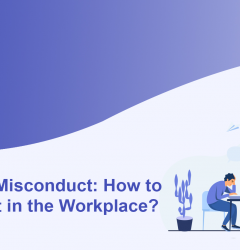21 Jun

Almost 70% of employees would be more productive if better communication practices were established. Whether you operate a significant organization or a local nonprofit organization, communication is necessary.
Consumers, users, and stockholders want professionalism and transparency in your communications. Using corporate communication, the finest company leaders foster open and truthful working relationships and signify the importance.
However, organizational communication is about more than simply your customers. It is also about your workforce. Employees perform much better when they have open and honest connections with their coworkers and bosses. The ability to explain oneself, exchange ideas, and have faith in the information received is the absolute minimum in the job.
Communication in an organization influences how individuals act inside the organization. Individuals’ attitude in the company influences how people inspire one another to attain organizational goals. Organizational communication is necessary for how individuals connect with each other in gatherings.
In this blog let’s check out what organizational communication is, what its types are, what are organization examples, and many more things.
- What is Organizational Communication?
- Types of Organizational Communication
- What is the purpose of organizational communication?
- Organizational Communication Examples
- Organizational Communication Jobs
- Organizational Communication Theory
- Advantages of Effective Organizational Communication
- Organizational Communication Aspects
- Wrapping It Up
- Frequently Asked Questions (FAQs)
Table of Contents
What is Organizational Communication?
Organizational communication is a practical word that describes how employees somewhere in a firm exchange information and communicate with each other, as well as with their potential consumers and partners. It is a component of organizational communication, which represents an effort to determine and comprehend how people, animals, and even objects communicate with one another.
Improving organizational communication might have a substantial impact on an organization’s overall success. People with a bachelor’s and/or master’s degree in organizational communication can work in a wide variety of fields, including human wealth, employee work training and leadership public relations and public incidents, wholesaling, information and communication authority, content marketing, strategic planning and defense, and research and orientation.
Organizational communication definition
“A program that focuses on broad communication processes and dynamics inside organizations,” according to the organization communication definition.
Types of Organizational Communication
Organizational communications are classified into four kinds. Some organizations rigidly commit to one kind of communication, whilst others commit to a combination of various communication types.
Let us learn about the various kinds of communications that occur in an organization in order to understand their influence on the company first.
1. Formal organizational communication
One of the most popular forms of communication in most businesses is formal communication. Formal communication occurs via which was before channels of communication.
Management and staff in the business utilize these channels of communication to interact with one another. Formal communication is particularly common in firms with an organizational structure.
A front-line employee cannot communicate with upper management in such firms. They communicate with one another via management positions.
2. Informal Communication
This communication style is the polar opposite of formal communication. Informal communication is not conducted through official means. Organizations that use informal communication to communicate with one another do not employ pre-defined communication routes.
This implies that management’s communication with the employees of the firm might occur through a range of channels.
In comparison to formal communication, which occurs through relevant means and middlemen between senior management and front-line employees, informal communication can occur simply between senior management and front-line employees.
Furthermore, organizations that practice informal communication lack a clearly defined hierarchical organizational structure. Employees in such companies are all deemed to be on the same level.
3. Horizontal communication
Horizontal communication is another kind of communication in an organization. It is a form of communication that occurs between persons who operate at the same level.
Horizontal communication is a formal communication between persons who work at the same rank and want to exchange information.
4. Vertical communication
Formal communication is further divided into two types: vertical communication and horizontal communication. Vertical communication is the exchange of information between supervisors and their subordinates.
Vertical communication may be divided into two types: upward vertical communication and downward vertical communication. Communication occurs from leaders to their workforce in upward vertical communication.
In comparison, downward vertical communication occurs between subordinates and their superiors.
What is the purpose of organizational communication?
Organizational communication is important for the growth of an organization. Communication breakdown is frequently the cause of an organization’s collapse.
Organizational communication is something that should never be disregarded. Here are some of the reasons:
1. Brand management
Organizations, whether major corporations or non-profits have no secret information. When a potential customer hears anything unpleasant, it undermines the company’s financial health and might even cause them to leave.
Communication between internal and external parties can significantly reduce the chance of unpleasantness happening and, if it does, it can be handled effectively.
2. Employee relations
People who feel empowered to perform their best perform better when they feel their voice has been heard. Employees who are committed to their job and the company as a whole benefit from effective organizational communication.
They seem to be more certain to like their job, to be recognized by their superiors, and to be more driven to attain objectives and satisfy consumers. Employees will also have a clearer understanding of the organization and their position within it if there is open communication.
3. Understanding each other better
A well-functioning organization maintains communication among its members. Consequently, there will be fewer misunderstandings and miscommunications. By knowing how customers communicate, they will be able to avoid accidentally giving incorrect information to them.
This reduces the risk of losing customers, dealing with legal disputes, or earning a negative reputation for a business.
In an organization, communication is the primary source of knowledge. Communication is used to transmit information to employees. That knowledge assists employees in extremely important decisions by providing them with an alternate course of action to complete a certain job.
When compared to other methods of corporate communication, structured and professional communication is more successful. As a result, many organizations invest money in publishing corporate publications and journals to share essential yearly information with their personnel.
Organizational Communication Examples
When it comes to organizational communication, there is no easy solution. If there was, there would be no need for an organizational communication study.
Organizations with good organizational communication use a range of strategies to achieve success. Here are some examples of positive organizational communication:
1. Feedback
A successful company promotes an atmosphere in which employee engagement is prioritized. As a result, organizations are always searching for methods to enhance organizational communication and promote feedback. They employ primary and secondary data to enhance the company’s operations and communication platforms.
2. Learning how to work remotely
When colleagues do not share the same workstation, internal communications might be more challenging. As a result, the greatest businesses offer remote work training to guarantee that all employees understand how to interact.
3. Social gatherings
Successful organizational communication cannot occur when coworkers are unpleasant or uncomfortable with one another. Social gatherings, such as team-building activities, serve to promote open, transparent, and professional connections while also demonstrating good communication methods to employees.
A successful firm encourages employee attitudes by planning social gatherings and fostering interaction. Social gatherings help to build healthy workplace cultures and boost employee morale.
4. Team discussions/meetings
Team meetings are an essential component of effective organizational communication. All departments should communicate and interact on a regular basis, solicit feedback, and freely express their viewpoints.
While team meetings are most typically held face-to-face, they can also be held digitally. Most organizations these days focus on enabling workers to operate efficiently from anywhere.
Team-building meetings appear as effortless as possible with High – resolution conferences for up to 150 people, organization security that protects all your chats, and carrier-grade architecture that keeps you connected at all times. You may indeed effortlessly screen share so Everyone understands each other’s position. Don’t allow distance to keep you from bringing your team together.
Organizational Communication Jobs
1. Organizational communication specialists
Organizational communication specialists work for organizations that assist other organizations in improving both internal and external communications.
They might, for example, develop and carry out projects intended at increasing employee engagement, team collaboration, or leadership development. Alternatively, they could collaborate with a business’s marketing department to modernize the company’s brand messaging.
They can even collaborate closely with corporate leadership to simplify or alter their organization’s vision and mission, as well as to modify employee and consumer communications effectively. organizational communication Specialists also assist company managers in communicating more efficiently with employees under their direction.
2. Media analysts
Media analysts utilize their knowledge of communication theory, literary criticism, and organizational dynamics to collect and evaluate data on how organizational communications systems work and change in a wide range of situations, from sociological to organizational to sociopolitical.
They frequently speak about and publicize their results in publications that enlighten both academics and businesses about the environment of communication across many areas.
3. Public affairs directors
Public affairs directors handle an organization’s global perception and relationships with all individuals outside of the company, such as customers, shareholders, and other organizations.
They often oversee a staff of public relations professionals that provide publicity campaigns such as news releases, informational material both online as well as offline, social media postings, and speeches, all intending to maintain a company’s and its administration’s favorable reputation.
Public relations directors and their teams also work with other departments to schedule public appearances and corporate events, as well as to develop relationships with other organizations.
4. Marketing executives
Marketing executives are in charge of designing and creating advertising and promotional content to showcase an organization’s commodities or operations. They often monitor the progress of various marketing activities while managing a staff of marketing professionals.
Marketing executives use their professional knowledge of their company’s field (e.g., technology, schooling, clothing, fashion, etc.) along with their expertise in efficient consumer-facing communication to develop compelling content that grows their brand recognition and customer base identification.
Organizational Communication Theory
There are certain theories that most organizations use to enhance their organizational communications:-
1. The Bureaucracy Theory
Max Weber, a German sociologist, devised the Theory of Bureaucracy to represent an ideal organizational communication form, that is, an organization with a high level of the formal framework. In the context of communication, the idea implies a hierarchical method in which each organizational member communicates to the superior of him or until connectivity reaches the highest authority.
According to the conspiracists, ideal organizations should possess an unapproachable structure and a straightforward set of rules not only to control employees’ emotional-oriented behaviors that end up causing them to react impulsively and chaotically but as well as to safeguard widely known workforce from misuse of authority by those in the building’s upper echelons.
2. The Acceptance theory
Chester Barnard introduced this notion in his book The Functions of the Executive in 1938. Barnard stated, among other things, that “the three purposes supplied by the informal organization are (1) communication, (2) preservation of cohesiveness in the formal organization and (3) maintenance of emotions of individual integrity and self-esteem.”
The Human Relations School contributed this notion to organizational communication. It is significant in organizational communication because it emphasizes the importance of not only getting acquainted all organizational members with efficient communication channels but also emphasizing the significance of structured channels of interaction to connect all employees in an organization, with every ordinary person within the organization reporting to or trying to demonstrate subordination to somebody else.
Moreover, Barnard emphasizes that “communication lines must be as direct and as short as feasible in order to maximize transmission speed and avoid distortions.”
3. Theory X and Theory Y
Douglas McGregor proposed this motivating theory based on opposing ideas about human psychology.
McGregor’s theory not only promotes the creation of the subconscious, enhances creative thinking, and recognizes people as the most valuable resource of the organization, but also implies that employees should be compensated based on their accomplishments and contribution towards the attainment of organizational goals rather than individual accomplishments and that they should be given a stake in the running of organizational affairs by encouraging them and helping to give them ownership in the running of organization culture.
The theory originated from the Human Resources School, and its significance lies in its capability to demonstrate that efficient communication and enthusiasm are two aspects of the same coin; that is, efficient communication, rather than governmental factors and the fear of sanctions, is more likely to encourage people to work towards organizational goals.
4. General Systems Theory
This theory was first proposed by biologist Ludwig von Bertalanffy in 1937, but it has since been expanded by various researchers such as Talcott Parsons and Erwin Laszlo. Ludwig developed the idea in order to account for the complex interactions in the world surrounding him and to see the world holistically.
This Systems School theory is applied to organizational communication. It is significant in organizational communication not only for emphasizing the need for response in any communication goal, in addition for its ability to persuade researchers to go beyond the entity’s border for a better understanding of interpersonal communication inside the company.

Advantages of Effective Organizational Communication
A secure connection, like so many other aspects of your life, is built on honest and straightforward communication. Things would fall apart quickly if your organization doesn’t interact efficiently with itself or its consumers.
A positive organizational communication plan guarantees that all employees are on the exact same level and understand the company’s goals and strategies. It contributes to the strengthening and maintenance of connections between workers, users, and consumers. It can also assist to increase overall corporate productivity by enabling the regular exchange of data between workers with important knowledge and those who require it.
Organizational Communication Aspects
Organizational leaders and managers must combine and channel the following aspects in their businesses to create a result-driven organizational communication plan:
1. Compassion
Compassion in organizational communication demonstrates that leaders and workers care about one another. It is beneficial in developing strong human ties in order to achieve positive communication goals.
2. Vividness
Messages and details must be conveyed in a clear and detailed manner for proper communication within and outside of organizations. Leaders should develop an organizational communication strategy that includes specific goals, processes, and transparent procedures.
3. Positive Interaction
A corporate strategy focused on positive interaction is critical for building a constructive organizational culture that motivates all organizational members, ensures effective crisis management, and maximizes productivity.
4. Self-assurance
Self-confidence is essential for both organizational executives and professionals since it allows you to voice your opinions and feelings instead of being confrontational or timid. It allows you to express yourself simply and honestly without criticizing or demeaning others.
5. Self-analysis
In organizational communication, self-analysis is crucial for soothing your body and spirit as well as decreasing interruptions.
An organizational communication environment that is positive, compassionate, aggressive, clear, and conscience will almost certainly have a greater chance of having a natural consequence organizational communication plan.
Wrapping It Up
An organization’s core is its effective organizational communication. No company can exist without effective organizational communication. Developing a successful communication strategy for a business necessitates a thorough grasp of the firm’s hierarchy, size, objectives, and values.
Establishing an organizational communication plan, on the other hand, is a difficult task. It brings with it a number of problems that ought to be examined and addressed when developing an organizational communication strategy.
Organizational communication is critical in assisting organizations to increase revenues and reduce production costs, but inadequate organizational communication can lead to employee misunderstandings.
Frequently Asked Questions (FAQs)
1. What are the three goals of organizational communication?
Organizational Communication serves three primary purposes within an organization: collaboration, information exchange, and emotion and experience exchange. All of these functions are essential for the achievement of any business.
2. What exactly is organizational communication research?
Organizational communication studies how communication is used to develop and sustain organizations, promote the accomplishment of the organization’s bigger goals, and present the organization’s purpose and mission to various stakeholders.












Himani